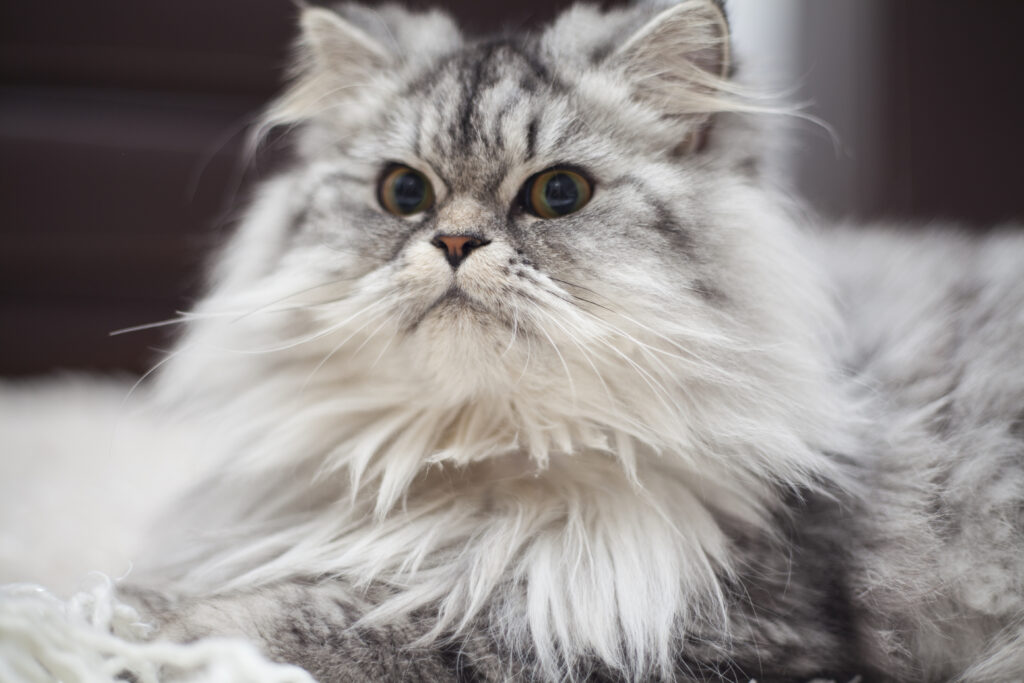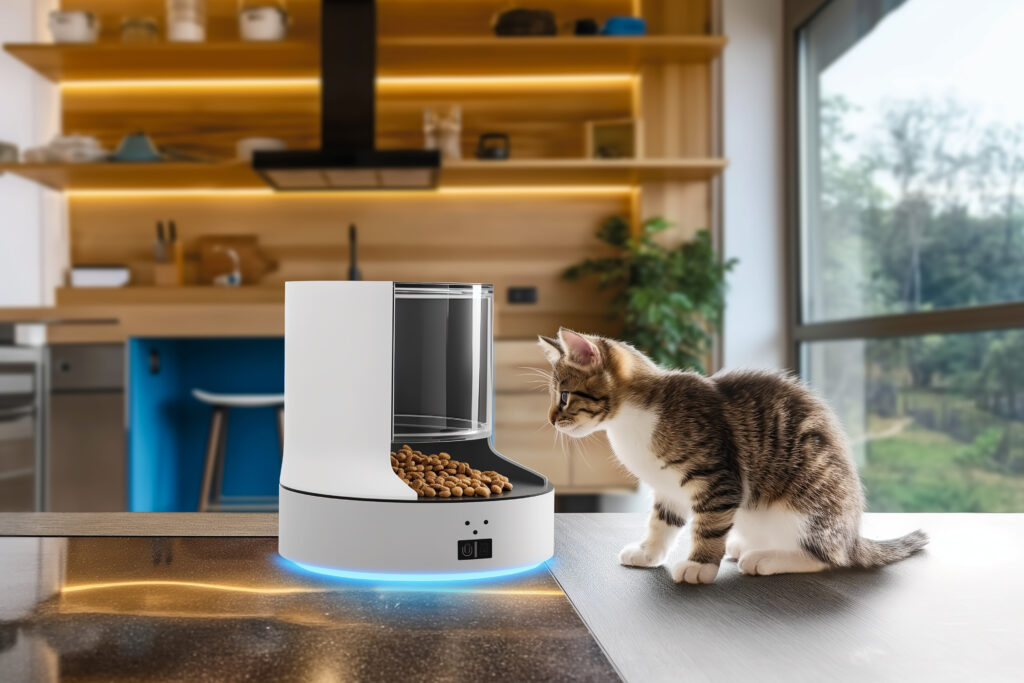
Welcome to the post on how to help a cat get a hairball up Hairballs are a common issue for many cats, especially those with long fur. While they are a natural part of a cat’s grooming routine, they can sometimes cause discomfort and other health concerns.
Fortunately, there are steps you can take to help your cat pass a hairball safely and comfortably. In this article, we’ll explore how to help your cat expel a hairball, the signs that it may be stuck, and how to minimize pain and discomfort.
Summary
Hairballs are a common issue for cats, causing discomfort when they can’t be coughed up. To help your cat pass a hairball, regular brushing is essential to reduce fur ingestion, while high-fiber food aids digestion. Hairball remedies like gels and pastes, along with petroleum jelly, can help lubricate the digestive system.
If your cat is gagging without producing a hairball, it may indicate a blockage or respiratory issue, and consulting a vet is crucial. Preventing hairballs through hydration, brushing, and proper nutrition can minimize discomfort, ensuring your cat remains happy and healthy.
Table of Contents
Methods: How to Help a Cat Get a Hairball Up
Below are the best 5 methods to help a cat get a hairball up
1. What Happens if a Cat Can’t Cough Up a Hairball?
Hairballs form when cats ingest hair while grooming, which then accumulates in their stomachs. If a cat is unable to cough up a hairball, it can result in several issues.
Potential Complications
When a cat can’t expel a hairball, it can lead to:
- Gastrointestinal Blockages: The hairball can cause a blockage in the stomach or intestines, preventing normal digestion.
- Discomfort and Pain: A hairball stuck in the digestive tract can lead to bloating, pain, and vomiting.
- Loss of Appetite: Cats may refuse food if they are feeling nauseous or uncomfortable from a stuck hairball.
If your cat is unable to pass a hairball after several attempts or shows signs of discomfort, it’s best to consult a veterinarian.
2. How Do I Know if My Cat Has a Hairball Stuck?
It can be difficult to know whether a cat has a hairball stuck or if the problem is something else. However, certain signs indicate that your cat may be having trouble passing a hairball.
Signs of a Stuck Hairball:
- Frequent Gagging or Coughing: Your cat may repeatedly attempt to cough or gag without actually bringing up a hairball.
- Loss of appetite: Cats with a stuck hairball may feel nauseous and avoid eating.
- Bloating or Distended Stomach: A blocked stomach can cause your cat to feel bloated or uncomfortable.
- Lethargy or discomfort: Your cat may seem less active or may hide more than usual if they are in pain.
When to Consult a Vet:
If your cat is gagging for more than a day or refuses to eat, it may be time to consult a veterinarian. A stuck hairball can lead to more serious health problems if left untreated.
3. What if My Cat is Gagging but No Hairball?
Sometimes cats may seem like they are gagging or trying to cough up a hairball but fail to produce one. There are a few reasons this may happen:
Possible Causes:
- Small Hairballs: Your cat may be expelling a very small hairball that isn’t noticeable.
- Respiratory Issues: Cats with respiratory problems like asthma or allergies may cough or gag without the presence of a hairball.
- Foreign Object Blockage: A blockage caused by something other than hair, like a small toy or plant material, could be causing your cat to gag.
What You Can Do:
- Monitor the Situation: If the gagging persists for more than a day, consult your vet to rule out other causes, like respiratory issues or foreign body obstruction.
Are Hairballs Painful For Cats?
Yes, hairballs can cause discomfort and pain for cats, especially if they are unable to pass them easily.
How Hairballs Cause Pain:
When a hairball is stuck in the stomach or intestines, it can lead to:
- Discomfort.
- Digestive Distress: The hairball can block the normal passage of food, which can cause bloating and general digestive discomfort.
Behavioral Signs Of Pain:
- Crying or Whining: Cats in pain may vocalize more than usual.
- Hiding: Cats may retreat to a quiet spot if they’re feeling unwell.
- Increased Grooming: Some cats may lick excessively around the stomach or throat area when they are in discomfort.
To help reduce pain and discomfort from hairballs, regular brushing and feeding high-fiber foods are key preventive measures.
4. Tips to Help Your Cat Pass a Hairball
Now that we understand the challenges of hairballs, let’s look at some effective ways to help your cat pass them.
1. Brushing Regularly:
Brushing your cat regularly is one of the best ways to prevent hairballs in the first place and help a cat get a hairball up if necessary. Regular grooming removes loose hair before your cat can ingest it, reducing the chance of hairballs forming. Long-haired cats should be brushed daily, while short-haired cats can be brushed a few times a week. This simple habit ensures your cat’s digestive system stays free from excess hair, making it easier for them to pass a hairball if needed.
2. High-Fiber Food:
Feeding your cat high-fiber food can help improve digestion and facilitate the passage of hairballs. Foods rich in natural fibers, such as pumpkin or psyllium, help move hair through the digestive tract. By including high-fiber food in your cat’s diet, you’re not only aiding in how to help a cat get a hairball up, but you’re also preventing constipation that may occur if a hairball gets stuck in the intestines.
3. Hairball Remedies:
.Hairball remedies, such as gels or pastes, can help lubricate the digestive tract, making it easier for hairballs to pass. These products are often flavored, so they’re easy to administer and can provide quick relief. Hairball remedies work by coating the hairball, allowing it to move more easily through the digestive system and improving your cat’s overall comfort
4. Petroleum jelly:
A small amount of petroleum jelly applied to your cat’s paw can help lubricate their digestive system. As they lick it off, it helps the hairball pass more easily through the intestines. This is another effective method how to help a cat get a hairball up, but remember to use petroleum jelly sparingly, as too much can cause an upset stomach
5. Hydration:
Proper hydration is essential for a healthy digestive system. Ensure your cat has access to fresh water at all times. Dehydration can lead to constipation, which can make it more difficult for hairballs to pass. Wet food is also a great way to increase your cat’s water intake.
5. Table: Tips for Helping Your Cat Pass a Hairball
| Tip | How It Helps |
| Brushing Regularly | Removes excess hair and reduces hairball formation. |
| High-Fiber Food | Aids digestion and helps move hair through the intestines. |
| Hairball Remedies | Lubricates the digestive tract for easier passage. |
| Petroleum Jelly | Provides natural lubrication to help pass hairballs. |
| Hydration | Keeps the digestive system functioning properly, preventing blockages. |
Personal Experience
As a cat owner, I’ve experienced firsthand the discomfort that hairballs can cause. My cat, Luna, has long fur, and I’ve had to learn how to manage hairballs to keep her comfortable. Regular brushing has been a game-changer, reducing the frequency of hairballs significantly.
I also started adding a small amount of pumpkin to her food, which seemed to help with her digestion and reduced the number of times she’d try to gag. On days when she’s had trouble passing a hairball, I’ve used a petroleum jelly remedy on her paw, and she’s always licked it off without hesitation. These simple steps have made a world of difference, and Luna seems much happier and more comfortable.
Conclusion
Hairballs are a natural part of a cat’s grooming routine, but they can cause discomfort and health issues if not managed properly. By brushing your cat regularly, feeding them high-fiber food, using hairball remedies, and keeping them hydrated, you can help prevent hairball issues and ease the discomfort they cause.
If your cat has persistent gagging, a loss of appetite, or shows signs of a stuck hairball, consult your vet. With the right care, your cat can stay happy, healthy, and hairball-free!
